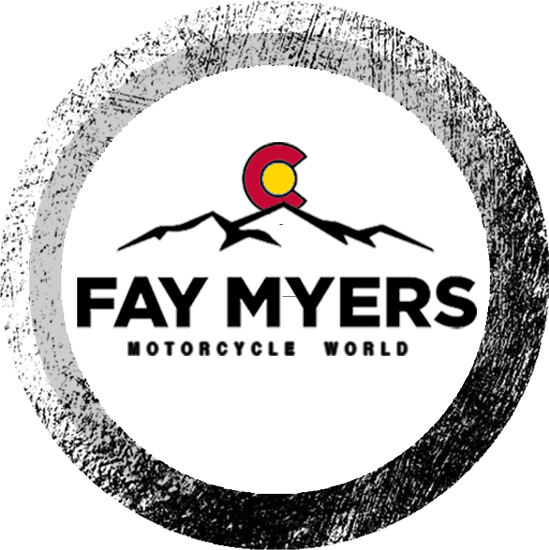How Fast Can an Electric Bike Go?
Electric bikes, or e-bikes, have surged in popularity as a versatile mode of transportation and a thrilling way to explore the great outdoors. But one of the most common questions for new and prospective owners is: “How fast do electric bikes go?”
Whether you’re hoping for an easy, relaxing weekend ride or searching for something that will push you to a new personal best, learning about the factors that influence e-bike speed will help you understand what to expect from your e-bike. We’re breaking down everything you need to know about the average speed of e-bikes, making it simple to shop for the perfect bike for you.
How Fast Do Ebikes Go?
Ebike speed isn’t just about how quickly you can zip from point A to point B. It’s a sometimes complicated balance between the bike’s design, legal limitations, and the rider’s input.
Let’s break down the factors that determine your e-bike’s velocity and how you can maximize your riding experience.
What Determines an E-Bike’s Speed?
Understanding what influences the speed of an electric bike (e-bike) is crucial for both potential buyers and current owners. Here’s a deeper dive into the factors that affect how fast your e-bike can go.
1. What’s Watt? Power and Performance
The power output of an e-bike’s motor, measured in watts (W), significantly impacts the bike’s speed capabilities. Higher wattage means more power at your disposal, facilitating quicker acceleration and the ability to maintain higher speeds over various terrains.
For example, a 750W motor accelerates faster from a standstill and climbs hills more efficiently than a 250W motor. This is because the additional power can overcome resistance more effectively, whether from the road surface, incline, or wind resistance.
However, it’s not just about the wattage. The motor’s efficiency in converting electrical energy into mechanical energy also influences how that power translates into speed.
2. Weighing Things Up
The physics of motion tells us that an object’s weight influences its acceleration and the energy required to maintain a certain speed. In the context of e-bikes, this means the combined weight of the bike and the rider directly affects performance.
A lighter e-bike requires less energy to accelerate and climb, which can lead to higher speeds and a more responsive ride. Conversely, heavier riders or loads will demand more from the motor. Selecting an e-bike that suits the rider’s weight and typical cargo can optimize performance and enjoyment.
3. Riding Surface
The riding surface plays a pivotal role in determining your e-bike’s speed. Smooth, hard surfaces like asphalt offer minimal rolling resistance, allowing you to reach higher speeds more effortlessly. On the other hand, soft or uneven terrains, such as gravel or sand, increase resistance and absorb more of the motor’s energy, reducing your speed and acceleration.
The effect of inclines and declines is also essential; while ascents require more power and can reduce speed, descents can increase it, sometimes beyond what the motor alone can achieve, offering a thrilling boost to your ride.
4. Legal Speed Limits
Regulatory speed limits are the most definitive factor in determining how fast your e-bike can legally go. In the United States, e-bikes are categorized into three classes based on their top assisted speeds: Class 1 and 2 are capped at 20 mph, while Class 3 can go up to 28 mph. It’s important to note that these limits are on motor-assisted speed.
Riders can exceed these speeds through pedaling, especially downhill, but the motor will not assist the specified limit. Understanding and adhering to these regulations is essential for safe and legal e-bike use.
Ebike Classifications and Speed Limits
In the U.S., e-bikes are categorized into three classes based on their speed and how the motor assists the rider:
- Class 1 e-bikes: These have pedal assist only, with no throttle, and the motor assistance stops at 20 mph.
- Class 2 e-bikes: Similar to Class 1 in speed, these models also include a throttle, offering motor assistance even when not pedaling, up to 20 mph.
- Class 3 e-bikes: These offer pedal assist up to 28 mph, with no throttle assistance.
Understanding these classes is crucial for choosing the right e-bike, as it affects where you can legally ride and how fast you can go.
Average Ebike Speed
While e-bike classifications set apparent top speeds, the average speed you’ll experience depends on how you use the motor assistance, the terrain, and your pedaling effort. On flat terrain, riders can comfortably cruise at the motor’s top-assisted speed without exerting too much effort. However, your average speed over a ride with varied terrain will likely be lower.
The Speed and Range Trade-off
Remember, there’s a trade-off with range when considering how fast you want to go. Higher speeds require more power, significantly reducing how far you can go on a single battery charge. If maximizing distance is your goal, riding at moderate speeds is more energy-efficient.
Maximizing Your Ebike’s Speed
While the motor and class of your e-bike set a framework for speed, achieving the highest possible velocity also depends on your effort. Pedal assistance means the more you pedal, the faster you can reach the legal limit. Downhill sections can also temporarily increase your speed beyond what the motor can achieve.
Ebike Legislation: Navigating Legal Speeds
The legal top speed of an e-bike varies by location, with most places setting limits to match the capabilities of Class 1 or Class 3 e-bikes. It’s essential to familiarize yourself with local laws to ensure you ride within legal speed limits, especially on trails or in areas with specific e-bike regulations.
Choosing the Best Ebike for Your Speed Needs
Whether you prioritize speed for commuting efficiently or seek the thrill of high-velocity rides, there’s an e-bike model suited to your needs. High-powered motors and lightweight frames favor speed, while more robust models with ample battery capacity are better suited for longer, more leisurely rides or heavy-duty use.
Browse Top-Rated Ebikes at Fay Myers Motorcycle World
Now, you can see why ebike speed isn’t a question with a one-size-fits-all answer. It depends on various factors, from the bike’s motor power and weight to the terrain you’re riding on and the legal speed limits in your area. By understanding these elements and how they interact, you can choose an e-bike that delivers the speed you desire while adhering to legal requirements. Remember, finding your ideal e-bike speed starts with knowing your riding preferences and local laws.
At Fay Myers Motorcycle World, we understand that speed is critical for many when choosing an e-bike. That’s why we offer a diverse selection of electric bikes from leading manufacturers, catering to everyone from urban commuters to off-road adventurers. Whether you’re looking for an e-bike with an electric bike top speed for thrilling rides or a model that balances speed with range for daily use, our team can guide you to the perfect e-bike.
Our range includes models from Ducati, Husqvarna, and other top brands, so you can find a bike that meets your need for speed and complies with local regulations. Let Fay Myers Motorcycle World help you navigate the options and get you on the fast track to e-bike enjoyment.
Visit us today to explore our collection and find an ebike that lets you feel the exhilarating power of electric biking.
Image Credit: Andrey_Popov / Shutterstock


